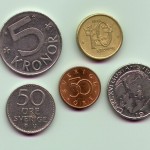 West Texas Intermediate crude eased after hitting the highest price in four weeks on Tuesday as a private report showed a larger-than-expected gain in US crude inventories in the week through January 24th. Investors awaited the outcome of FOMCs two-day meeting ending today where an alleged further reduction in the central banks monthly bond purchases would strengthen the US dollar and reduce the appetite for riskier assets.
West Texas Intermediate crude eased after hitting the highest price in four weeks on Tuesday as a private report showed a larger-than-expected gain in US crude inventories in the week through January 24th. Investors awaited the outcome of FOMCs two-day meeting ending today where an alleged further reduction in the central banks monthly bond purchases would strengthen the US dollar and reduce the appetite for riskier assets.
On the New York Mercantile Exchange, WTI crude for delivery in March fell by 0.29% to $97.13 per barrel by 8:24 GMT. Prices shifted in a narrow daily range between $97.37 and $97.01 a barrel. The US benchmark rose to a four-week high of $97.66 on Tuesday and settled the day 1.8% higher, but trimmed its weekly advance to 0.5% following Wednesdays decline.
Meanwhile on the ICE, Brent futures for settlement in the same month traded at $107.43 a barrel 8:25 GMT, up 0.02% on the day. Prices held between days high and low of $107.59 and $107.33 a barrel respectively. The European benchmark added 0.7% on Tuesday but is down 0.4% on weekly basis. Brents premium to its US counterpart narrowed to $10 on Tuesday, down from $10.97 on Monday, based on closing prices.
The oil market gained support on Tuesday after a huge hike in interest rates in Turkey surprised investors, fueling hopes it would end a viscous cycle of selling in emerging markets and boost risk appetite. Meanwhile, market players also awaited the outcome of Feds policy meeting later today. Broad market expectations called for a further $10-billion reduction in the central banks quantitative easing program, a tool used to revive the impaired US labor market and a source for appetite for riskier assets. A confirmation would lift the US dollar, thus weighing on demand for dollar-denominated commodities, but it would also indicate US economic growth is sustainable, boosting demand prospects for oil.
US consumer sentiment
Rising consumer confidence in the US in January also helped push prices up, offsetting earlier worse-than-expected durable goods data. The Conference Boards consumer confidence index rose to a five-month high of 80.7 in January amid optimism about the economy and an improvement in the labor market. Januarys reading outstripped expectations for a minor advance to 78.0 after Decembers number received a downward revision to 77.5 from initially estimated at 78.1. Americans who said that jobs were plentiful and current business conditions were good were the most since August 2008.
Millan Mulraine, deputy head of U.S. research and strategy at TD Securities USA LLC in New York, said, cited by Bloomberg: “One would expect an acceleration in spending momentum going into 2014. You’d probably want to see these numbers being sustained over the next few months for you to believe that it will be reflected in spending habits.”
Inventories levels
US crude however retreated on Wednesday after a private report showed a larger-than-expected build in US inventories. The industry-funded American Petroleum Institute said that US crude stockpiles rose by 4.75 million barrels in the week ended January 24th, while motor gasoline supplies rose by 363 000 barrels. Distillate fuel inventories, a closely-watched category during the winter which includes heating oil and diesel, fell by 1.79 million barrels, the API reported.
APIs data however are deemed less popular than EIA’s statistics as they are based on voluntary information from operators of refineries, pipelines and bulk terminals, while the government requires reports to be filed with the EIA.
The Energy Information Administration is expected to report a 2.25-million jump in US crude supplies, according to a weekly Bloomberg News survey. Motor gasoline stockpiles are projected to have gained 1.6 million barrels, while distillate fuel supplies likely decreased by 2.55 million.
The oil market drew some support after Iraqs top energy official said that spillover attacks from the Syrian civil war have impaired Iraqs gas and oil reserves and a major Mediterranean pipeline has been blown up several times. However, a larger-than-average loss in refining capacity in the Gulf Coast will reduce demand for crude, dragging on prices. According to data by Reuters, Gulf refineries are expected to shut an average capacity of 628,000 barrels per day in the first three months of 2014 and another 243 000 bpd in the second quarter.





